PAINTING
with
ACRYLICS Ian Coleman

THE CROWOOD PRESS
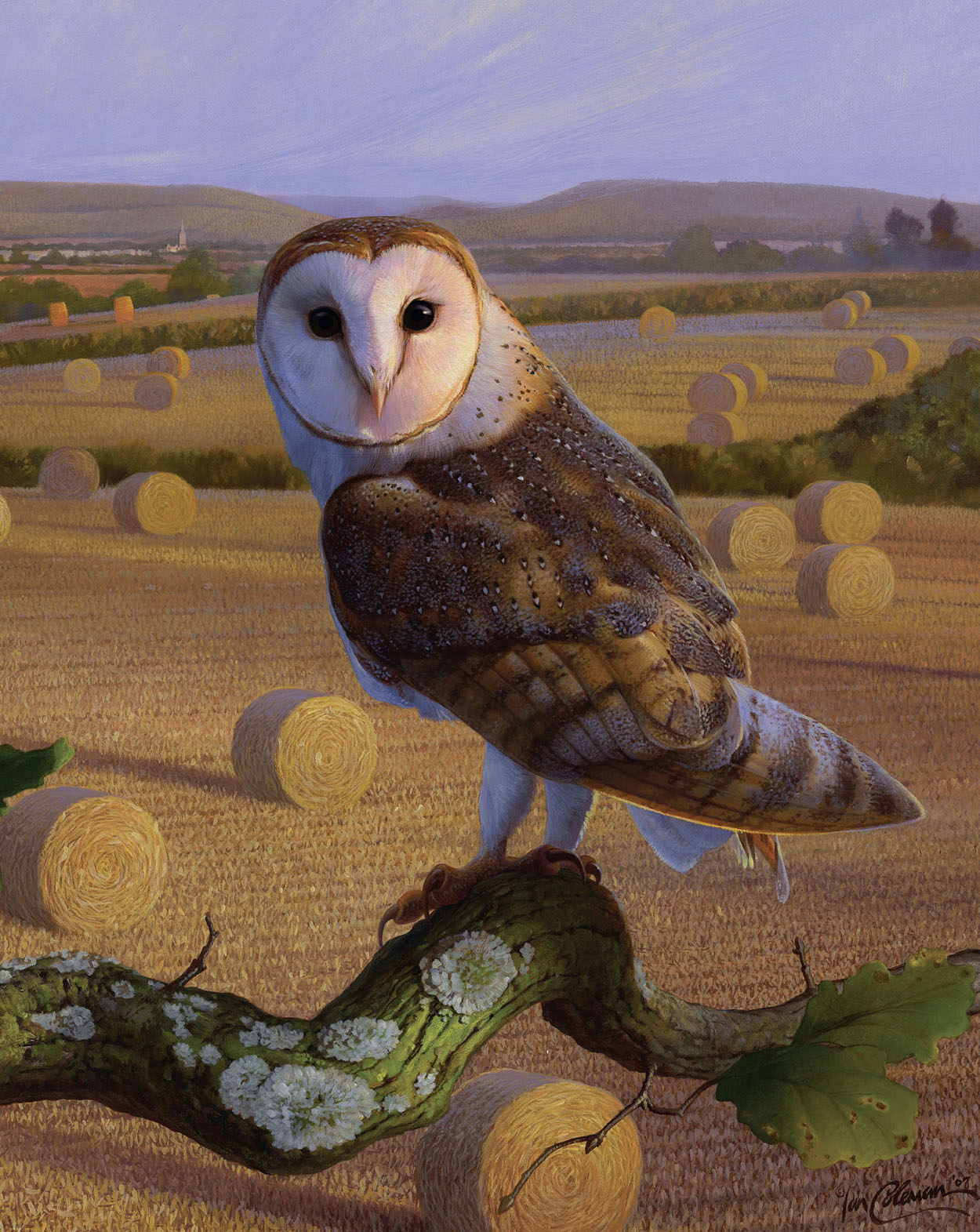
First published in 2015 by
The Crowood Press Ltd
Ramsbury, Marlborough
Wiltshire SN8 2HR
www.crowood.com This e-book first published in 2015 Ian Coleman 2015 All rights reserved. No part of this publication may be reproduced or transmitted in any form or by any means, electronic or mechanical, including photocopy, recording, or any information storage and retrieval system, without permission in writing from the publishers.
British Library Cataloguing-in-Publication Data A catalogue record for this book is available from the British Library. ISBN 978 1 84797 884 4 Frontispiece: Detail of
Barn Owl near Ross-on-Wye. Acrylic on MDF board by Ian Coleman. 61x64cm (24x18in).
Painted on gesso board using tints, semi-opaque layers and thicker opaque layers. Blue wash tints in the sky on top of a base cream colour. Dedication To Becky and our three sons Huxley, Dexter and Jasper, a constant source of inspiration. CONTENTS 

 INTRODUCTION This is a book that takes a technical and detailed approach to learning a wide range of effects within this forgiving medium of acrylic paint. In this book I aim to show you how to control its fast drying quality to your advantage. Its a tough paint which takes all sorts of handling, especially multiple layers of thick and thin textures and best of all its very forgiving with mistakes.
INTRODUCTION This is a book that takes a technical and detailed approach to learning a wide range of effects within this forgiving medium of acrylic paint. In this book I aim to show you how to control its fast drying quality to your advantage. Its a tough paint which takes all sorts of handling, especially multiple layers of thick and thin textures and best of all its very forgiving with mistakes.
In a nutshell there are no rules with Acrylics. Acrylic paintings can take on so many styles with results that look like flowing watercolours, solid gouache colours or luscious oil paintings. The type of painting you would like to create is achievable with this versatile medium. The core techniques in this book illustrate what you can do with a limited set of materials to then go on to include all the wonderful additives, brushes and mediums available today. This book demonstrates eleven classic paint techniques with each image predominantly rendered in that featured style to encourage you to either copy it directly or use a similar image in the same technique. THE AIM OF THE BOOK Id like to introduce you to a set of useful brush skills to manipulate acrylic paint to achieve a range of styles and finishes.
Each example has been kept to within a single technique as far as possible, using a core range of brushes with a basic range of paint colours, without the huge range of specialised products. All these techniques could be combined in one work of art and in a style that is so far removed from the craftsmanship approach taken in this book. However, completing a painting solely in one technique can rapidly help you to learn a new skill. The principals of how to handle the paint could be applied to any style of painting no matter how loose, expressive and abstract the image may be.  I hope you enjoy playing with these core techniques and in the process find one or two that fire you off into a new direction of imagination.
I hope you enjoy playing with these core techniques and in the process find one or two that fire you off into a new direction of imagination. 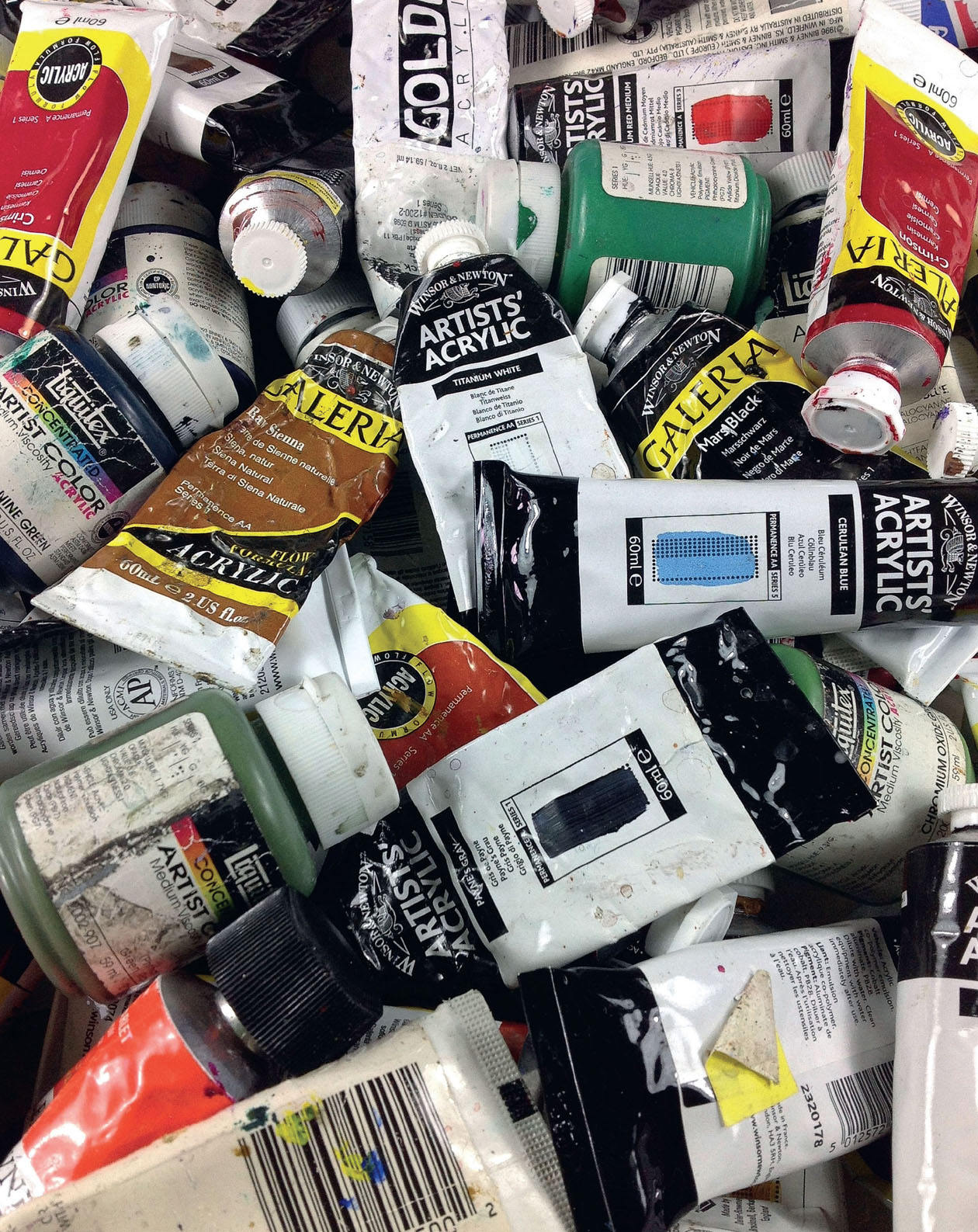 CHAPTER 1
CHAPTER 1  TOOLS AND MATERIALS BRUSHES All the images were painted at this book size of 220 280mm, with the brushes and paints featured in each chapter.
TOOLS AND MATERIALS BRUSHES All the images were painted at this book size of 220 280mm, with the brushes and paints featured in each chapter.  CHAPTER 1
CHAPTER 1  TOOLS AND MATERIALS BRUSHES All the images were painted at this book size of 220 280mm, with the brushes and paints featured in each chapter.
TOOLS AND MATERIALS BRUSHES All the images were painted at this book size of 220 280mm, with the brushes and paints featured in each chapter.
Ive selected a relatively small range of brush types to cover many of the popular and classic ways of mark making, to show how they may become your core favourites. However, dont be worried if you cant obtain the same brands or sizes: these are just a guide to the brush type, and ones that are similar will be fine. I use a mix of artists grade brushes and budget brushes. Obviously its true that you get what you pay for, but if an old decorating brush gives the marks required, then thats the best one for the job! So generally my advice is always to get the best brush for the purpose. My studio is full of old and out-of-shape brushes which do make an appearance every now and then, so I never throw them away. Quality, well made synthetics and Hog brushes hold their shape and last longer.
Painting with a cheap detail brush which has a tip that doesnt spring back, or splays at the slightest pressure, is completely frustrating. However, occasionally a budget paint brush does the very job you want, and thats why Ive included them here in the book namely the black-handled Winsor & Newton Azanta range for blocking in, and the Royal & Langnickel Soft Grip Nylon Bright Brushes for detailing. Langnickel Hogs are also good value. The only down side to acrylic is that it will ruin your clothes unless you remove it immediately; also, to some extent working with acrylics will have you replacing your brushes more frequently than oils or watercolours. But thats the only down side! 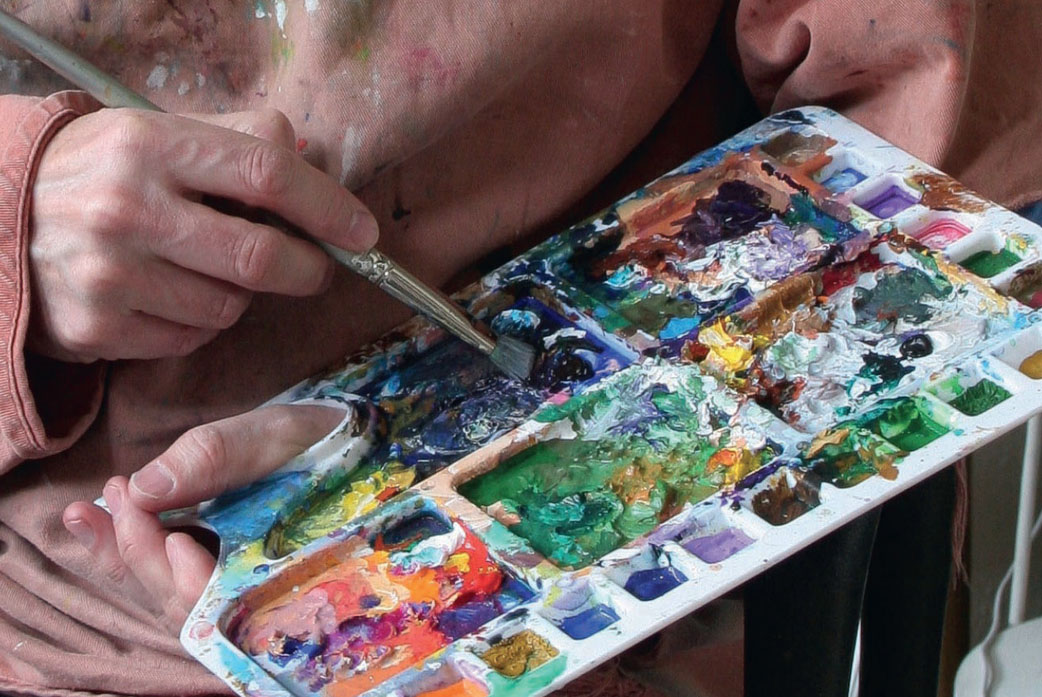 Fig.
Fig. 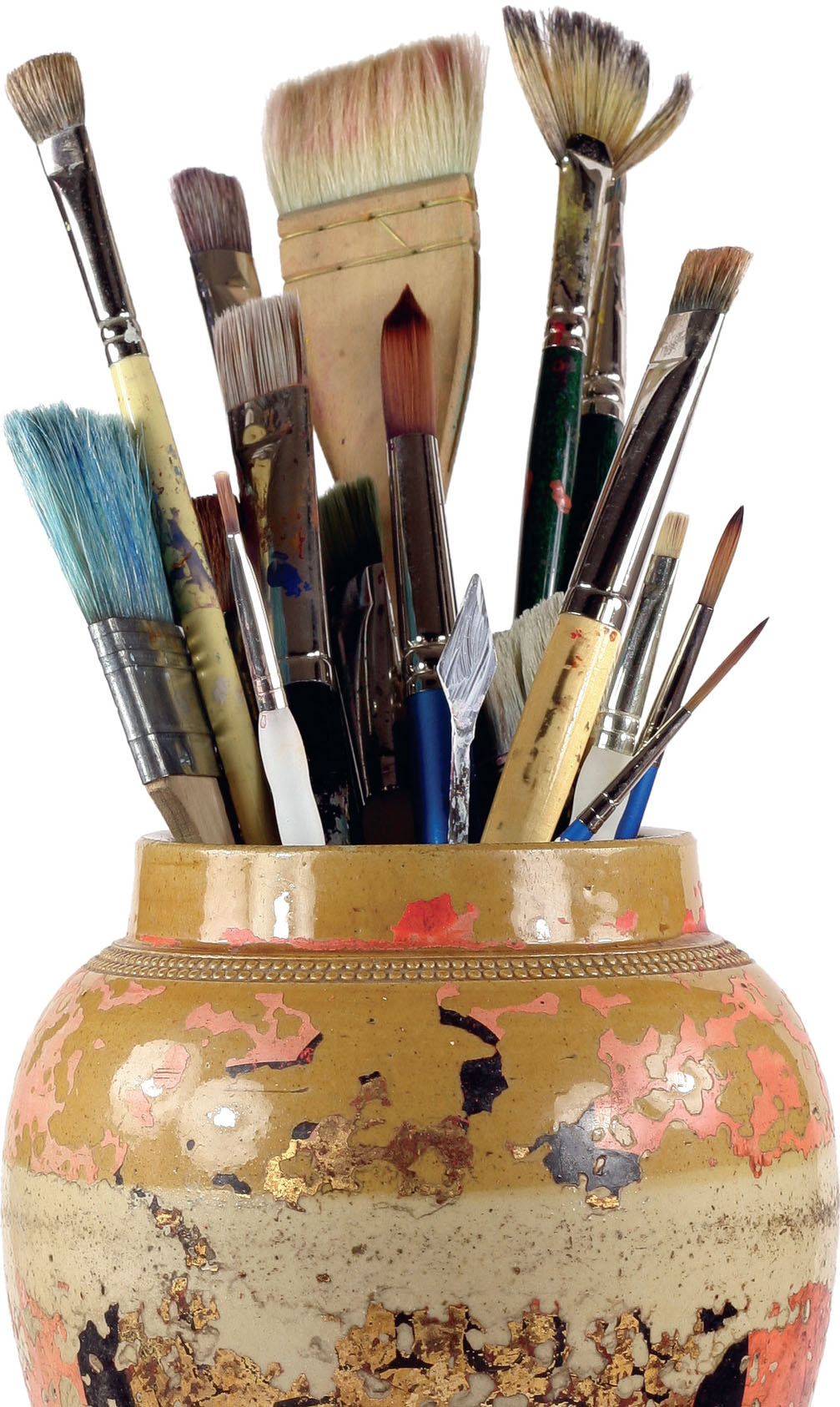 Fig. 1.2 All the brushes used in the making of this book. BRUSH TIPS
Fig. 1.2 All the brushes used in the making of this book. BRUSH TIPS
| Dont let the paint dry on the brushes. |
| Wash your brushes well. |
| Use a mixing brush to save the tip of the painting brush. |
| To revive a brush, soak before applying a mechanics hand cleaner. |
| Treat your brush gently: for example, load a round brush by rotating it in colour and not dabbing or swishing. |
ACRYLIC PAINTS Acrylic paint is a water-soluble, fast-drying paint. ACRYLIC PAINTS Acrylic paint is a water-soluble, fast-drying paint.
Once dry it cannot be re-hydrated, and so any number of thick and thin layers can be applied on top. They bond to a huge range of surfaces, which is why they are so popular in the crafts and arts world. The range of acrylics comes in three distinct viscosities: liquid, soft and heavy-bodied, each being created for a different purpose. This book features the soft-bodied range, which has a medium viscosity enabling it to overlap with both the other ranges. Its a great place to start because you can then see in which direction you would like to go. Super-budget acrylic paints have an inherent poor quality, and using them could give you a disappointing experience of what these amazing paints can do.

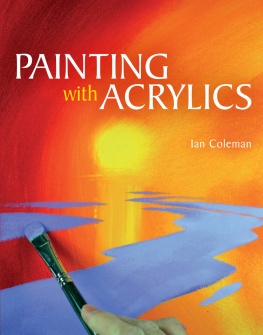



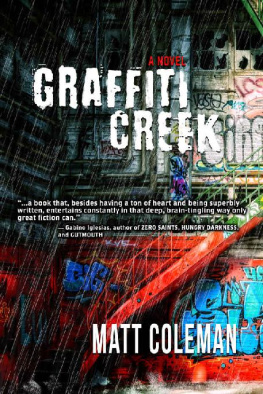
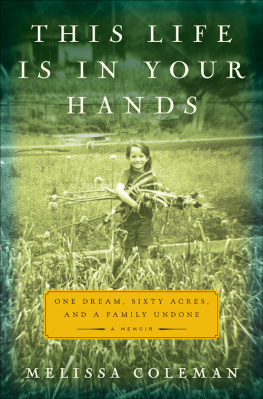

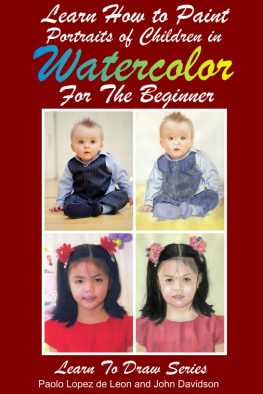

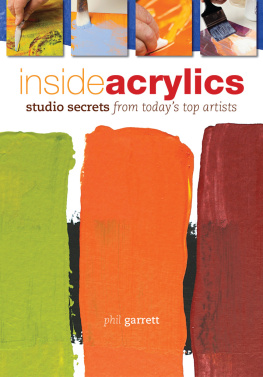

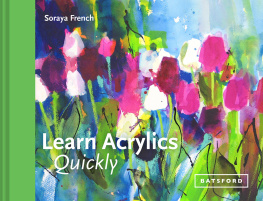
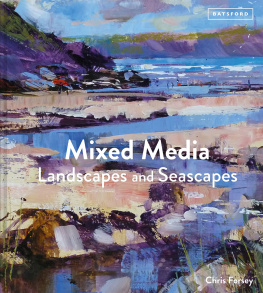
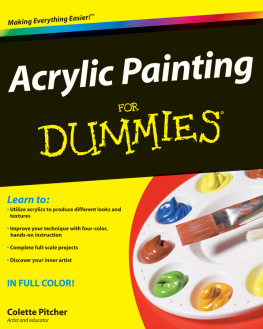

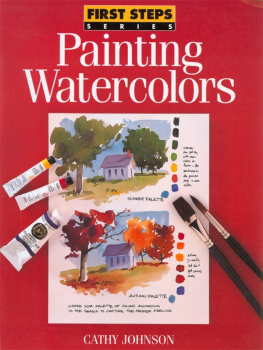


 THE CROWOOD PRESS
THE CROWOOD PRESS  First published in 2015 by
First published in 2015 by

 I hope you enjoy playing with these core techniques and in the process find one or two that fire you off into a new direction of imagination.
I hope you enjoy playing with these core techniques and in the process find one or two that fire you off into a new direction of imagination.  CHAPTER 1
CHAPTER 1  Fig.
Fig.  Fig. 1.2 All the brushes used in the making of this book. BRUSH TIPS
Fig. 1.2 All the brushes used in the making of this book. BRUSH TIPS